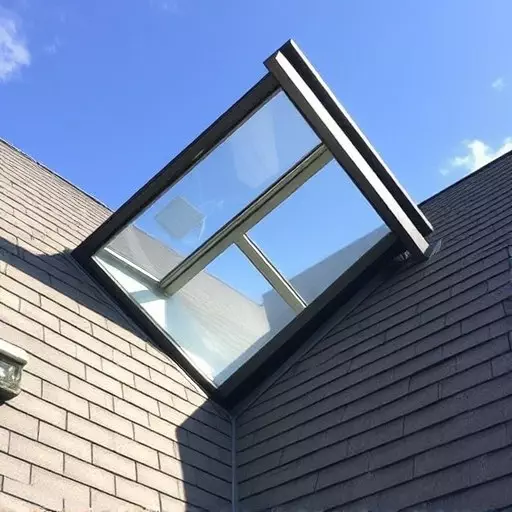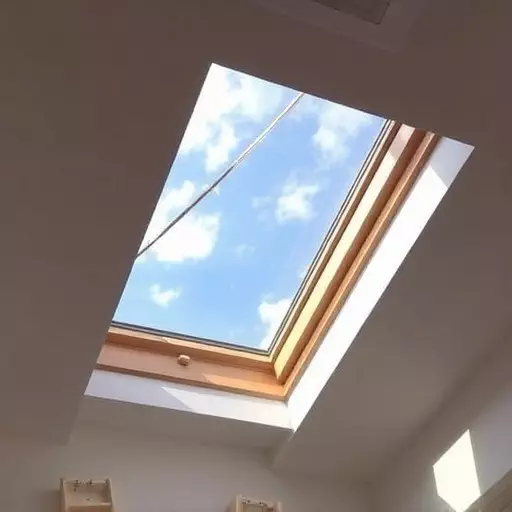Skylights are transforming homes in Appleton, Wisconsin by maximizing natural light and reducing energy bills. There are two main types: fixed models for consistent lighting and operable skylights for ventilation. This guide focuses on installing fixed skylights, emphasizing proper location, high-quality materials, and energy efficiency. The right fixed skylight depends on climate, location, and roof setup, with larger sizes requiring better insulation and advanced materials minimizing heat transfer.
“Discover the transformative power of natural light and energy efficiency with energy-efficient skylights. This comprehensive guide explores the benefits and various types available in today’s market. For homeowners in Appleton, Wisconsin, we delve into the step-by-step process of skylight installation, ensuring a seamless addition to your space.
Furthermore, learn about the crucial factors to consider when choosing the right fixed skylight to maximize energy savings and enhance your living environment.”
- Understanding Energy-Efficient Skylights: The Benefits and Types
- Skylight Installation Process: A Step-by-Step Guide for Appleton, Wisconsin
- Choosing the Right Fixed Skylight: Factors to Consider for Optimal Efficiency
Understanding Energy-Efficient Skylights: The Benefits and Types
Energy-efficient skylights are a game-changer for homeowners looking to enhance their living spaces while reducing energy costs. These innovative window solutions allow natural light to flood into homes, providing an alternative to traditional artificial lighting and resulting in significant energy savings. In terms of skylight installation Appleton Wisconsin, there are various options available to suit different needs and architectural styles.
There are two main types: fixed skylights and operable skylights. Fixed skylights, as the name suggests, remain stationary and are perfect for providing consistent, passive lighting. They come in a range of designs, from simple round or rectangular units to more intricate models with multiple panels. Operable skylights, on the other hand, offer the benefit of ventilation. These skylights can be opened and closed, allowing fresh air to circulate and helping regulate indoor temperatures, especially in warmer months. This feature is particularly beneficial for homes with limited fresh-air intake or those seeking additional energy efficiency.
Skylight Installation Process: A Step-by-Step Guide for Appleton, Wisconsin
Installing a skylight in your home in Appleton, Wisconsin, can be a rewarding project that brings natural light and beauty into your living space. Here’s a step-by-step guide to navigating the skylight installation process for fixed skylights, specifically tailored for Appleton residents.
First, assess your attic access and ensure it’s adequate for the size of the skylight you plan to install. Next, choose the right location for optimal light exposure and ventilation benefits. Purchase a high-quality fixed skylight from a reputable supplier, considering factors like insulation, energy efficiency, and weatherproofing. Once you have your materials, start by removing any existing roof covering or flashing at the installation site. Prepare the roof deck, ensuring it’s clean, dry, and free of debris. Install new flashing and sealants to create a watertight barrier. Then, position and secure the skylight frame according to manufacturer instructions, making sure it aligns with your roof’s structure. Finally, finish the installation by sealing around the edges and testing for any leaks.
Choosing the Right Fixed Skylight: Factors to Consider for Optimal Efficiency
When considering energy-efficient skylights for your Appleton, Wisconsin home, choosing the right fixed skylight is crucial. Several factors influence optimal efficiency. First, assess your climate and geographic location; some regions require more insulation to prevent heat loss or gain than others. The size and placement of the skylight are also essential; larger skylights offer more natural light but may require better insulation or shading to avoid energy shifts.
Material choices play a significant role in efficiency. Modern fixed skylights often incorporate advanced technologies like low-e (low-emissivity) coatings that reflect heat back into your home during colder months and keep it out during warmer ones, enhancing energy conservation. Additionally, consider the frame material; some materials conduct heat more efficiently than others, impacting overall energy performance. Lastly, think about integration with your existing roofing system to ensure seamless installation and maximize insulation benefits.


